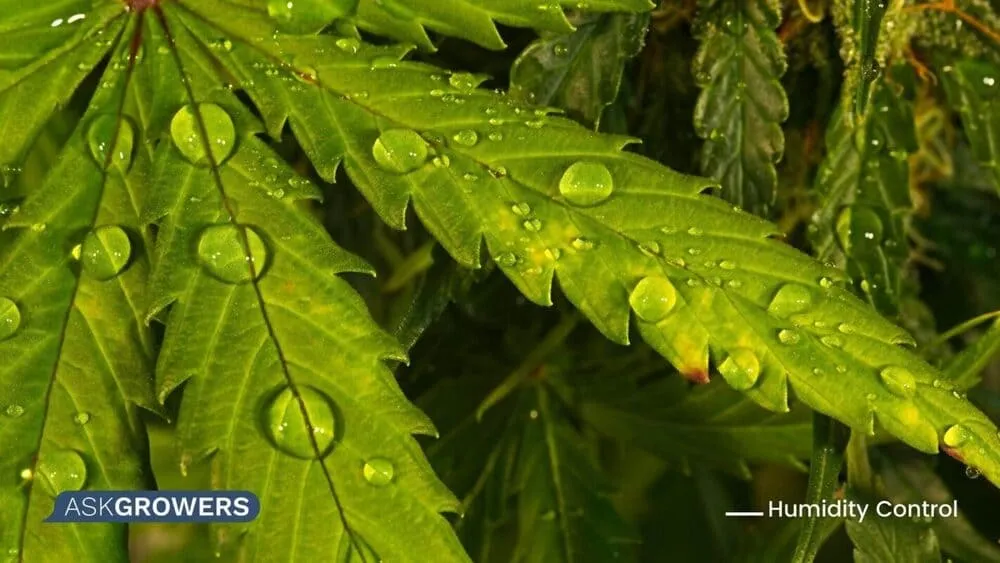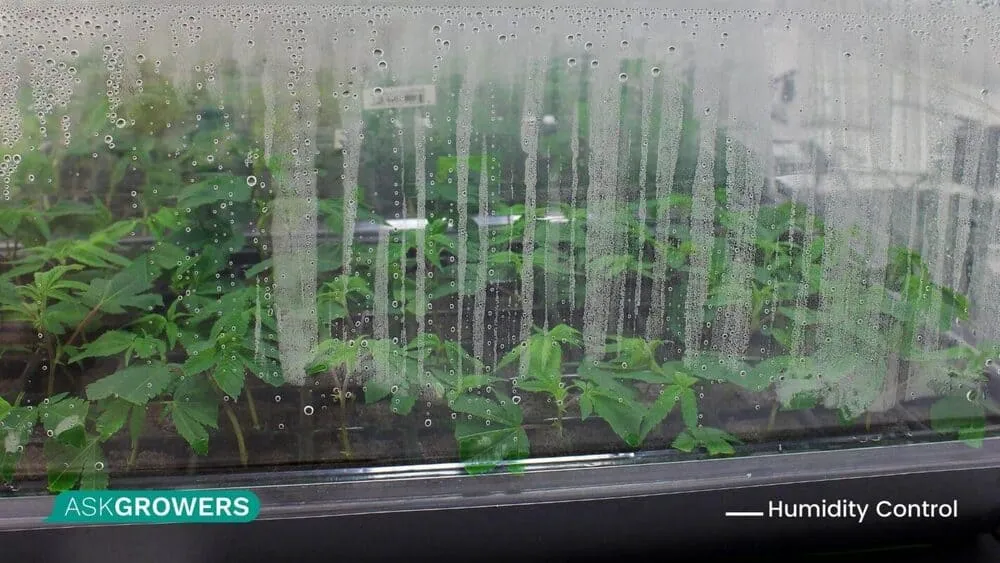Cannabis is a demanding plant, which needs ideal temperature, ventilation, light, and growing medium to produce optimal yield. Humidity is one of these key environmental characteristics playing an immense role in cannabis indoor cultivation. Researchers maintain that humidity affects plant architecture and chemical properties. In other words, it determines whether your plant will produce flowers and how good your weed will be. But what is the best humidity for cannabis, and how to achieve it if you’re growing your weed indoors? This article shares some useful tips on how to regulate humidity effectively.
Ideal Humidity for Growing Marijuana
Let’s start with the basics and define relative humidity. This term relates to the amount of water vapor held in the air at a specific temperature, expressed as a percentage. Humidity is higher in warm temperatures, which are optimal for cannabis growth.
What is the recommended humidity level for weed? Well, it all depends on the growing stage. Let’s summarize the primary information to keep in mind when you grow your weed indoors:
- Seedling stage: 65-70% humidity
- Vegetation stage: 40-70% humidity (you can decrease it gradually every week)
- Flowering stage: 40-50% (do not exceed 60%!)
- Before-harvest stage: 30-40%
As you can see, juvenile plants need more moisture as they grow. The vegetative growth and flowering, in turn, require lower optimal humidity.
Optimal humidity levels allow the plant’s pores to open and respire more CO2. As a result, it grows faster. A dry atmosphere forces the plant to switch to survival mode, meaning that you will get a compromised yield. In extreme situations, cannabis plants may dry out and die. Dry conditions in the growing space may also weaken the plants, making them vulnerable to spider mites attacks. It is tempting to think that you can just water cannabis more often if the humidity is low. However, over-watering reduces the amount of air in the soil, which increases the risk of root rot.
If you expose your garden to too much humidity, it may get attacked by bacteria and fungi. Moreover, plants exposed to increased humidity reduce water intake from the soil, which results in diminished nutrient uptake. As a result, plants suffer stress and grow slower than needed.

Thus, you need humidity control to:
- Reduce the risk of diseases
- Eliminate infestation risks
- Speed up growth
- Improve weed taste
- Maintain optimal nutrient intake
Effective Humidity Control
You may need to reduce or decrease humidity in your room depending on many factors, such as season, weather, temperature, and others. If your plants need more moisture, take advantage of humidifiers, which release water vapor into the air. Switch on dehumidifiers removing excess moisture from the air to decrease humidity. By the way, if you use technology to create optimal growing conditions, your growing method is called controlled environments horticulture (CEH). This term refers to the use of specialized equipment to control environmental conditions in indoor growing sites.
However, you don’t necessarily have to create a high-tech environment. A spray bottle is a simpler and cheaper alternative, which may also come in handy. You can also try a cost-effective option involving the use of open containers with water. As it evaporates, it gradually increases the moisture level in the air.
Moreover, you need to control other environmental factors closely connected to humidity. These include the following:
- Room insulation is critical! Use foam insulation and other materials to seal the room and protect it from outside factors. Your grow space should be carefully isolated from the external environment, allowing you to control the moisture and temperature more effectively.
- No humidity control is possible without temperature control. Cannabis plants thrive at temperatures between 70-85°F during the day and between 58-70°F at night. Depending on the emerging needs, use lights, fans, air conditioners, or heaters to maintain this optimal temperature.
- Air movement also affects moisture levels. Sometimes, opening the growing space and letting some fresh air in solves the problem.
- Drainage is important for preventing stagnant water pools. If you water your plants too often, your growing space may have puddles on the floor. These increase moisture levels and serve as perfect breeding spaces for bacteria, which may damage your plants.

Humidity and Storage
Like any other dried plant, weed can go bad in storage. Therefore, humidity control is important after you collect and prepare your buds for use. The amount of water in the air determines how long your weed will last and how good it will taste. Too much moisture can cause mold growth and unpleasant smoke. Too little moisture, on the contrary, will cause buds to crumble and become too dry. You risk losing the precious flavor and medical properties. You don’t want that after you’ve invested so much time and energy in cannabis cultivation, right?
Use specialized packets and containers and keep your buds in ideal humidity, which is about 40-50%. Find a dark, cool space that no third parties can access and store your weed there. Check it from time to time to ensure that it stays good.
Conclusion
The importance of humidity for growing weed can hardly be overestimated. It determines the plant’s growth, nutrient intake, CO2 intake, and resistance to diseases. Careful monitoring of humidity and associated factors, such as temperature, drainage, air movement, etc., will help you increase your yield and protect the collected buds.

